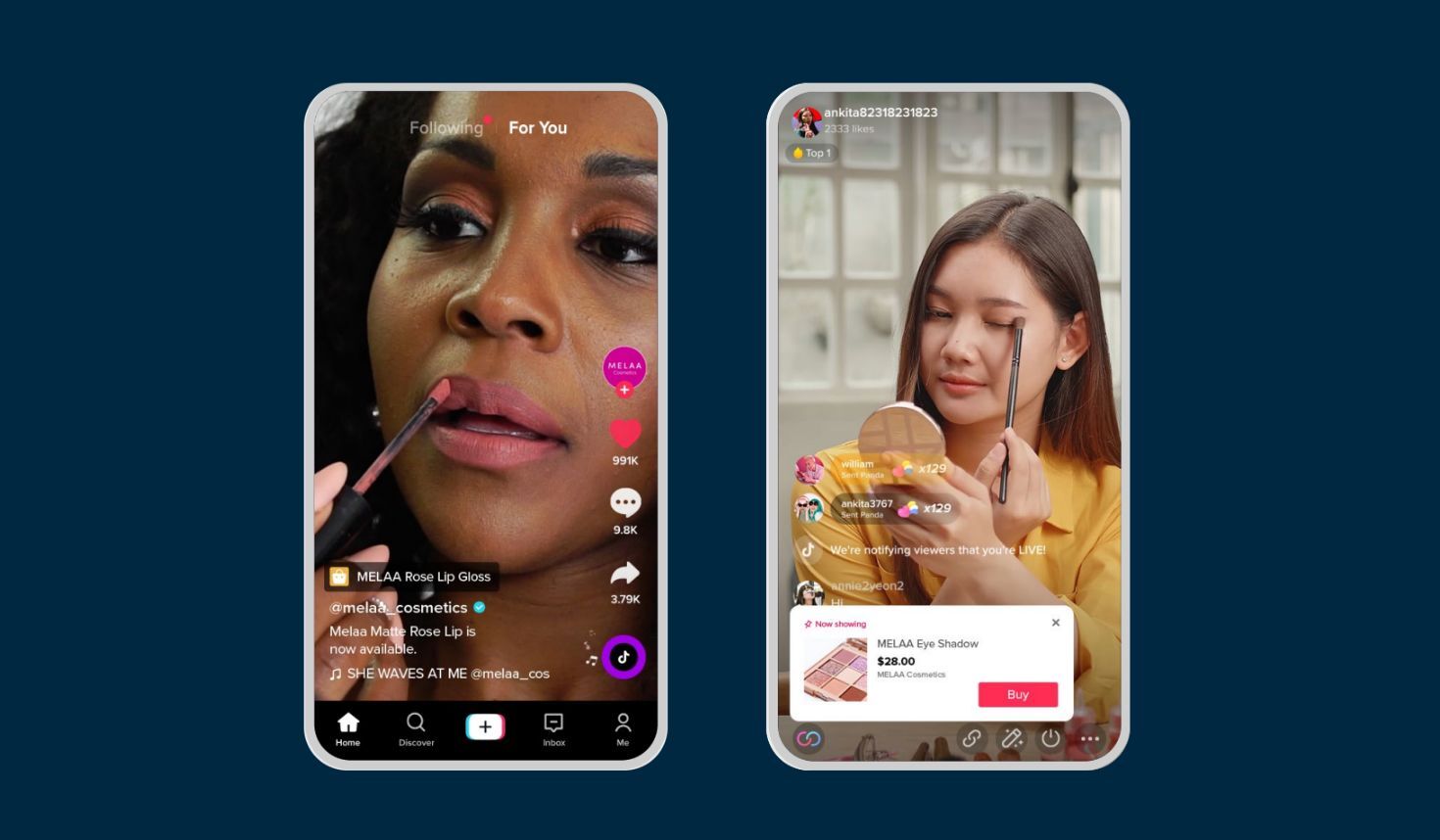Staying Ahead in the Age of Social Commerce: Tactics To Engage and Convert Your Audience
By Donna-Marie Bohan
05/09/2024

With digital connectivity constantly shaping consumer behaviors, this has led to the commerce landscape evolving and growing more complex. A recent panel discussion at the Composable Commerce Summit featuring representatives from TikTok, BigCommerce, HMV, and Luxe Collective shed light on the shifting dynamics of the customer journey and strategies businesses can employ to stay ahead in the age of social commerce.
Let’s explore the key learnings from the panel.
The Evolving Customer Journey
In today's commerce landscape, authenticity reigns supreme as consumers seek genuine connections with brands that align with their values and interests. Connor Weir, a Community Marketing Manager at HMV, highlighted the disappearance of the singular customer archetype, emphasizing the existence of diverse niche audiences with specific interests and preferences. In his view, targeting these niche communities and engaging with them on their terms has become paramount for brands seeking to foster meaningful connections. For example, he spoke about the importance of speaking to HMV’s K-pop customers in a relatable way and opening up an in-store K-pop experience in Birmingham to engage specifically with them on their terms.
The panelists unanimously agreed that the traditional linear customer journey has become a relic of the past. Instead, consumers interact with brands via multiple touchpoints and channels before making a purchase. According to Google research commissioned by BigCommerce, 80% of shoppers engage with a brand across various touchpoints before conversion.

Additionally, the nature of product discovery itself is changing. Flavia De Pfyffer, a Fashion Lead at TikTok Shop, mentioned that “shopping behaviors have transitioned from active discovery and searching of products to products finding us through content.”
With the rise of generational monikers and buzz terms such as Gen Z and millennials prevalent in the media, panelists were asked about what value they see in marketing to audiences in this way and through demographic behaviors. They noted the significance of generational marketing and the power of cultural communities in shaping consumer behaviors.
Oliver Millar, the COO at Luxe Collective, noted that there’s a difference between customer bases that purchase and customer bases that consume social content. In particular, millennials and older audiences often purchase and convert at a higher rate than Gen Z audiences, who prefer authentic social content. This ties in to the significance of generational marketing and the power of cultural communities in shaping consumer behaviors.
On the plus side, these trends show that by investing in building brand affinity and brand loyalty with a Gen Z audience, brands will be in a prime position to convert those audiences later on when they have more purchasing power.
On the whole, understanding the unique preferences and behaviors of different generations and cultural communities will allow brands to tailor their strategies effectively.
Tactics To Engage and Convert Your Audience
One of the key ways the panelists suggested for engaging your audience is to build genuine connections and drive authentic audience engagement. This is crucial on any channel but especially on channels like TikTok, where a brand’s relatability reigns supreme.
TikTok trends suggest that a higher follower count for creators doesn’t necessarily equate to a higher conversion rate. In fact, it’s often the creators with smaller audiences that form a deeper level of connection and trust with their followers. This is why it’s important to focus on creating content relating to the specific needs of the people you’re targeting.

Oliver went on to talk about the success he’d seen with live shopping and creating 1:1 personal shopping experiences. Luxe Collective hosted a live show on its website where the team showcased various hand-picked new luxury products. While website views were generally lower than on social commerce channels, these website visitors were higher converting shoppers, and they even began to engage and chat with one another before the start of each live shopping experience. Luxe Collective’s approach is a prime example of leveraging the power of a strong community to engage and convert audiences.
Connor also shared his experience with using personalized engagement tactics at HMV, leveraging Bloomreach to tailor content and messaging based on audience behaviors and preferences. This approach of talking to customers on their terms resulted in a 10% uplift in email open rates and strengthened brand affinity.
Investing in the Right Tech Stack
Of course, none of the above tactics will be effective if you don’t have the right technology infrastructure to support your commerce initiatives. Elizabeth Azide, Director of Marketing in EMEA at BigCommerce, focused on the significance of composable commerce architecture in facilitating agility and flexibility, which in turn allows businesses to adapt quickly to changing trends and experiment with new strategies.
Composable commerce enables brands to architect a tech stack tailored to the specific needs of their business and their customers, from product discovery to checkout. A great example of this approach is how HMV uses hyper-personalization to engage with its K-pop audience — a critical tactic as it enables more customers to convert.
Composability allows you to bring together different solutions and offer a smooth progression through all the different stages of the customer journey. By integrating solutions that optimize online traffic, personalize the user experience, and streamline the checkout process, businesses can create a seamless and delightful journey for their customers.

“Composability is also about longevity,” according to Elizabeth. One constant is that markets and shopping trends will change. There will always be new generations to market and sell to. Setting up your business with the right tech stack to easily adapt to the changes that are inevitably coming is necessary to pull your business in the right direction and win with your customers.
Building a Test-and-Learn Strategy
A robust test-and-learn strategy is about driving continuous improvement and innovation. This is something that Luxe Collective is familiar with. Facing the abundance of data and available solutions in the market, the luxury fashion retailer’s agile team decided to strip things back to basics and focus on aligning tech solutions with their core business objectives and what they aimed to achieve.
Additionally, platforms that facilitate easy testing and experimentation are the ones you need in your tech stack. Legacy monolithic systems often hinder agility, whereas modern platforms like BigCommerce and Bloomreach empower businesses to test quickly and iterate based on real-time feedback.
Key Takeaways
As the discussion drew to a close, the panelists offered pieces of advice for businesses navigating the social commerce landscape:
- Bold experimentation is essential for growth and innovation
- Authenticity is key for driving conversions and fostering meaningful connections with consumers
- Mobile optimization is critical for engaging and converting customers
- Despite the abundance of data and tactics, businesses should focus on simplicity and clarity in their strategies
Staying ahead in the age of social commerce requires a deep understanding of the evolving customer journey, a commitment to authenticity and engagement, and the right technology infrastructure to support experimentation and innovation. By embracing these principles and leveraging the insights shared by industry leaders, businesses can thrive in an increasingly competitive digital landscape.
For even more insights into keeping customers engaged in the modern commerce landscape, listen to our Commerce Experience podcast episode on experiential retail.
Found this useful? Subscribe to our newsletter or share it.





